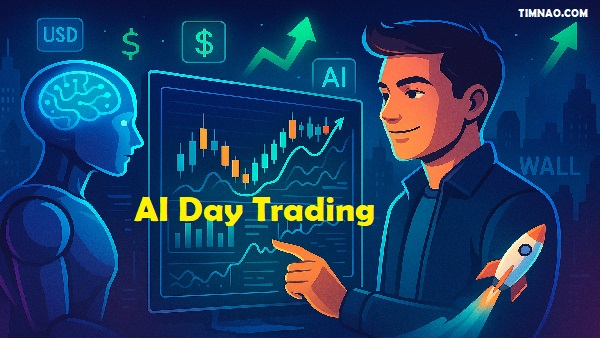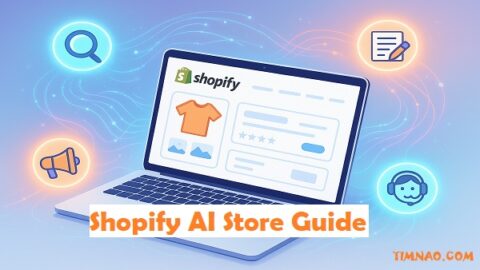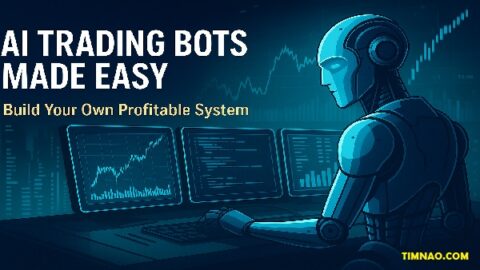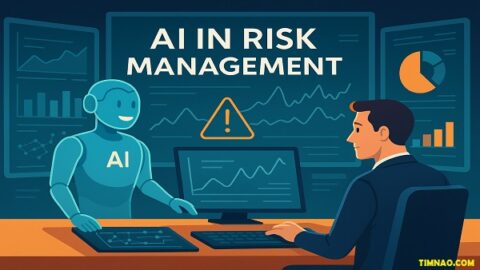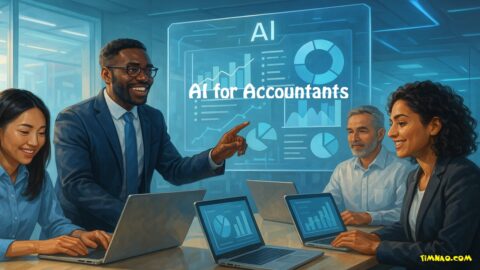AI Day Trading Secrets Exposed: Why Smart Traders Win Big in 2025 💰
AI day trading is rewriting the rules of financial markets—and it’s not just for hedge funds or tech wizards anymore. In 2025, even beginner traders are using artificial intelligence to find smarter setups, reduce emotional mistakes, and generate real results in real time.
Gone are the days of relying solely on gut feelings and candlestick patterns. Today’s AI-powered systems can analyze thousands of data points in milliseconds, detect patterns invisible to the human eye, and execute trades with surgical precision. But here’s the twist: you don’t need to be a coder or Wall Street pro to get started.
Whether you’re curious about building your first algorithm, wondering how AI makes trading decisions, or trying to choose between crypto, stocks, and forex—this guide will walk you through everything you need to know in plain English. You’ll get insider examples, beginner-friendly strategies, and the latest tools that make AI trading accessible to everyone.
Ready to trade smarter, not harder? Let’s dive into the future of finance.
✅ Table of Contents
- 📈 The New Era of Day Trading: Fast, Smart & AI-Powered
- 🧠 How AI Thinks: Data, Models & Market Prediction
- ⚙️ Building Your First AI Trading System (Step-by-Step)
- 🛡️ Risk Management Like a Pro (Without Overthinking)
- 🤖 Real Examples: AI Strategies That Actually Work
- 💥 Common Myths Busted: What AI Day Trading Is Not
- 🧭 Manual vs. Algorithmic: Which Is Right for You?
- 💡 Choosing Your Market: Stocks, Crypto, or Forex?
- 📊 Mind Over Money: Mental Game of AI Traders
- 🚀 The Future Is Now: Tools, Trends & What’s Coming
- ❓ FAQs for Beginners in AI Day Trading
📈 The New Era of Day Trading: Fast, Smart & AI-Powered
AI day trading isn’t just a trend—it’s a radical shift in how financial markets are navigated, optimized, and conquered. In 2025, the fusion of artificial intelligence and day trading has created a high-speed, data-driven battlefield where smart algorithms outperform emotional decisions, and milliseconds make millions.
For beginners entering this high-tech domain, it’s important to understand how drastically the landscape has evolved. Day trading used to be about gut feeling, fast fingers, and human reflexes. Today, it’s about smart machines, real-time analysis, and algorithmic precision. AI isn’t replacing traders—it’s amplifying them.
Why the Shift?
Traditional manual trading requires humans to constantly watch charts, analyze news, and make rapid decisions. This approach is vulnerable to emotion, fatigue, and inconsistency. Enter algorithmic trading strategies, which allow AI-powered systems to execute trades based on real-time data, with zero emotion and full discipline.
What Makes AI Day Trading So Powerful?
- ⚡ Speed: AI reacts in milliseconds—no human can compete with that.
- 📊 Data Depth: AI processes thousands of data points per second, from market prices to news headlines, tweets, earnings reports, and even Reddit chatter.
- 🔁 24/7 Adaptability: Algorithms never sleep. Especially in crypto and forex markets, AI systems monitor, learn, and adapt in real time.
In fact, modern AI day trading systems use deep learning to identify non-obvious patterns, even in chaotic markets. Many leading platforms like QuantConnect or Trade Ideas now offer plug-and-play environments for retail traders to build and test their own AI models—no PhD in math required.
Pro Tip for Beginners: Start with paper trading using demo platforms with AI-assisted signals. This lets you test strategies in real market conditions—without risking real money.
This new era of trading is no longer just for hedge funds. Thanks to open-source tools like Backtrader, Pine Script, and APIs from brokers like Interactive Brokers, anyone can build or rent an AI-powered trading bot. And as you’ll soon discover, the true edge comes not just from having AI—but from understanding how it thinks.
🧠 How AI Thinks: Data, Models & Market Prediction
To appreciate the power of machine learning in finance, you need to peek inside the mind of the machine. What makes AI different from traditional software? Instead of following fixed rules, AI learns from data—just like humans, but much faster and without bias.
Here’s how an AI trading system works behind the scenes:
🔍 Step 1: Data Ingestion – Feeding the Machine
The first step is collecting massive amounts of data from diverse sources:
- Real-time price feeds from exchanges
- News headlines from Bloomberg or Reuters
- Social media sentiment from platforms like Twitter or Reddit
- Economic indicators, earnings calendars, and volatility indices
Tools like Alpha Vantage or Quandl allow free or affordable access to structured financial data. This raw data is the fuel for the AI engine.
🧹 Step 2: Data Cleaning & Feature Engineering – Making It Usable
Raw data is messy. AI can’t learn from chaos. So, the next step is:
- Standardizing formats (e.g., aligning timestamps)
- Removing outliers or errors
- Normalizing values (so price changes are on a common scale)
- Engineering features like:
- Moving averages (MA)
- Relative Strength Index (RSI)
- Implied volatility (IV)
- Sentiment scores (positive/negative ratings from news)
For example, an AI model might learn that stocks with high earnings surprises and positive sentiment tend to rise in the short term. But it only sees this pattern because the features were clearly prepared.
🧠 Step 3: Model Selection & Training – Teaching the AI to Predict
Once data is ready, it’s fed into machine learning models. Some common models used in AI day trading include:
- Gradient Boosted Trees (e.g., XGBoost) – great for structured data
- Recurrent Neural Networks (RNNs) – excellent for time-series like price charts
- Reinforcement Learning (RL) – ideal for dynamic decision-making under uncertainty
These models are trained on historical data to recognize patterns that lead to profitable trades. For example, the AI might learn that when a stock beats earnings by 10% and has rising social sentiment, there’s a 70% chance it will rally over the next three days.
Latest Insight (2025 Update): Top hedge funds now use Transformer models—the same tech behind ChatGPT—to model complex market behavior using multi-modal data (price + text + time-series).
🎯 Step 4: Prediction & Execution – Turning Insight into Action
Once trained, the AI uses live data to generate trade signals:
- Buy when the model predicts a 65%+ chance of an upward move
- Sell or short when downside probability spikes
- Avoid trades in high-uncertainty situations (e.g., volatile earnings)
These signals are passed to a trade execution system, often connected to broker APIs like Interactive Brokers or Alpaca. The system may place:
- Market orders
- Limit orders
- Or even use smart order types like TWAP (time-weighted average price) and VWAP (volume-weighted average price)
🔁 Step 5: Feedback Loop – Learning from Success & Failure
AI doesn’t just make predictions—it learns from them. After each trade:
- It checks if the outcome matched the prediction
- Updates its internal weights using reinforcement learning
- Adapts to changing market conditions (e.g., bull vs. bear regimes)
This constant feedback loop is what makes AI smarter over time—something traditional backtested strategies can’t do.
Real-World Example: NVDA Earnings Strategy (2025)
Let’s say Nvidia ($NVDA) is about to report earnings.
- The AI ingests data: analyst expectations, past earnings surprises, options activity, and Reddit sentiment
- Predicts: 80% chance of upside post-earnings based on similar historical patterns
- Action: Buys near-term call options with favorable risk/reward
- Exit: After earnings beat and 8% rally, sells for +90% gain
This kind of setup is only possible because AI understands context, adapts quickly, and automates both entry and exit based on data—not emotion.
⚙️ Building Your First AI Trading System (Step-by-Step)
Starting your journey into AI day trading might sound like something that requires a degree in computer science—but in 2025, that’s no longer true. With the rise of user-friendly tools, pre-built templates, and no-code AI platforms, beginners can now build their first AI-powered trading system in days, not months.
Let’s break it down into a step-by-step process anyone can follow:
🛠️ Step 1: Choose Your Trading Platform
Before building anything, you’ll need a solid platform that supports:
- Real-time data feeds
- Backtesting capabilities
- Broker integration for live trading
Recommended for Beginners (2025):
- TradingView with Pine Script (for strategy scripting)
- QuantConnect for Python-based AI strategy testing
- Tradetron – a no-code algo trading platform for those who don’t want to program
If you’re not a coder, platforms like Kavout or Composer offer drag-and-drop AI strategy builders that allow you to set up trades visually.
🧪 Step 2: Backtest Your Strategy with Historical Data
This is where your system is trained and validated. You’ll test your logic using past market data to see how your AI would have performed.
You’ll need to:
- Define your logic: e.g., “Buy if RSI < 30 and sentiment score > 0.5”
- Run the strategy on 5+ years of data
- Check key metrics like:
- Win rate
- Max drawdown
- Sharpe ratio (risk-adjusted return)
Many tools now integrate auto-backtesting with AI suggestions, meaning the platform will recommend tweaks based on your past performance.
Pro Tip: Avoid “overfitting.” A strategy that performs too perfectly on past data might fail in real markets.
🧠 Step 3: Add Your AI or ML Model
Here’s where the intelligence kicks in.
You can train a machine learning model to:
- Predict price direction (up/down/flat)
- Estimate confidence levels
- Rank assets based on momentum or risk
Great beginner-friendly ML libraries in 2025:
- Scikit-learn
- H2O.ai
- Neurobot – a no-code AI engine tailored for trading
If you’re using Python-based platforms, plug in models like:
from sklearn.ensemble import RandomForestClassifier
model = RandomForestClassifier()
model.fit(X_train, y_train)
Even if you’re not coding, some brokers now offer AI signal generators that you can plug into your strategies without writing any code.
🔗 Step 4: Connect to a Broker for Live Execution
Once your strategy is tested and AI-enhanced, it’s time to deploy it live.
Popular brokers with seamless AI integration:
- Interactive Brokers – offers fast API access
- Alpaca – commission-free stock trading via API
- Binance – for crypto AI trading
Make sure your system supports:
- Limit/market orders
- Order throttling (to avoid flooding the broker)
- Monitoring dashboards to track trades in real-time
🔁 Step 5: Monitor and Refine
Your job doesn’t end when the bot starts trading.
Use built-in performance dashboards to:
- Track profit/loss
- Measure trade accuracy
- Adjust parameters weekly or monthly
AI-powered bots learn best with feedback loops. Many modern systems automatically update their models based on outcomes—this is called reinforcement learning.
⚠️ Start with paper trading (virtual money) before going live. This helps avoid emotional decisions and expensive mistakes.
🛡️ Risk Management Like a Pro (Without Overthinking)
Risk management is where beginners either make it or break it. It’s not about being perfect—it’s about protecting your capital when you’re wrong (because you will be sometimes).
With AI day trading, your system can automate risk controls just like the pros. Here’s how to manage risk like a professional—without overthinking it.
🎯 Rule #1: Never Risk More Than 1-2% Per Trade
This is the golden rule for any day trader. Even if your AI system predicts a 90% win rate, there’s always a chance of loss due to:
- Unexpected news
- Latency
- Market manipulation
- Flash crashes
By keeping each trade’s risk under 2%, you ensure one bad trade won’t wreck your account.
Example: If your account has $5,000, risk no more than $100 per trade.
⛔ Rule #2: Always Use Stop-Loss Orders
Let your AI set automated stop-loss and take-profit levels for every trade. For example:
- Stop loss at -5%
- Take profit at +10% to +20%
Tools like MetaTrader 5 or cTrader allow you to integrate these rules into your algorithm with precision.
📉 Rule #3: Limit Your Leverage
In 2025, many platforms offer 5x, 10x, even 100x leverage. But for beginners, this is a trap.
Leverage magnifies both gains and losses. Start with 1:1 or 2:1 leverage until you have a proven, consistent strategy.
AI can’t protect you if you blow up your account in one overleveraged trade.
📊 Rule #4: Diversify Your Assets
Avoid putting all your trades into one stock or crypto coin. Instead, use your AI to:
- Scan for multiple high-confidence setups
- Allocate risk proportionally across different assets
- Avoid correlation (don’t go long on 5 tech stocks at once)
🚨 Rule #5: Monitor Risk Metrics Regularly
The best AI traders review these key risk indicators weekly:
- Drawdown: Largest peak-to-trough loss
- Sharpe Ratio: Return relative to risk
- Win/Loss Ratio: Are you right more than you’re wrong?
- Kelly Criterion: Optimal bet sizing based on edge
Platforms like Edgewonk or TraderVue now provide AI-powered risk dashboards—even for beginners.
🧘 Bonus Tip: Remove Emotion with Automation
Human emotion is the biggest risk of all. That’s why automated AI systems outperform even talented manual traders—they never get scared, greedy, or impulsive.
Set it. Test it. Monitor it. But don’t override your bot because you’re feeling “lucky” or panicked.
🤖 Real Examples: AI Strategies That Actually Work
You’ve learned the theory—now it’s time to see AI in action.
Modern AI day trading strategies aren’t just academic ideas. Many of them have been tested across real markets—stocks, crypto, forex—and have produced consistent, risk-adjusted results. Here are three AI-powered trading strategies you can study, adapt, and eventually automate for your own use.
📊 Strategy #1: Post-Earnings Momentum with Sentiment Overlay
Objective: Capitalize on strong price moves after companies release earnings.
🧠 How It Works:
- AI scans earnings reports (via APIs like Yahoo Finance or Finviz).
- It analyzes:
- Earnings surprise %
- Pre/post earnings sentiment from Twitter and news headlines
- Implied volatility and options pricing
- If a stock beats earnings by more than 10% and social sentiment is rising:
- AI triggers a buy signal on short-term call options or stock
🧪 Example (2025 Update):
- Stock: $AMD
- Earnings: +15% surprise
- Reddit/Bloomberg Sentiment: Positive spike
- AI Action: Bought ATM call option expiring in 7 days
- Outcome: Stock rallied 9%, option returned +80% in 48 hours
This is the exact logic behind the “Earnings Momentum Options Play” used by several AI-driven hedge funds.
💹 Strategy #2: RSI + Sentiment Divergence Detection
Objective: Catch reversals when technicals and sentiment disagree.
How It Works:
- AI monitors RSI (Relative Strength Index) levels for oversold/overbought signals
- It cross-checks real-time social sentiment
- Entry is triggered when:
- RSI < 30 (oversold)
- Sentiment remains strongly positive
- High volume spikes or insider buying detected
Example (2025):
- Asset: $SOL (Solana crypto token)
- RSI: 26 (heavily oversold)
- News: Major partnership with Visa announced
- AI Action: Triggered long position on SOLUSDT pair
- Result: 12% price bounce in 6 hours, +3.5% profit after fees
This strategy works best in crypto and tech stocks—assets that react quickly to sentiment swings.
🧬 Strategy #3: Machine-Learned Pattern Recognition (AutoML Strategy)
Objective: Use AI to detect profitable chart patterns invisible to the human eye.
How It Works:
- A deep learning model is trained using thousands of historical charts
- It learns the features of bullish flags, bear traps, cup-and-handle patterns, etc.
- Based on recent price action, it predicts:
- The probability of breakout
- The expected move range
- Automatically sets stop-loss/take-profit based on volatility
Example:
- Stock: $PLTR (Palantir)
- Pattern Detected: Bullish flag + consolidation volume
- Predicted Move: +6% in 3 days
- AI Action: Bought shares with 3.5% stop-loss
- Result: Exited with +5.8% profit in 2.8 days
This is often called a multi-factor predictive strategy, and can be customized with tools like Google AutoML or H2O Driverless AI.
🧠 Bonus Tip: Combine Your Strategy with Reinforcement Learning
In 2025, traders are using reinforcement learning—a branch of AI where bots learn from their own successes and mistakes. These systems:
- Adjust risk dynamically
- Learn when not to trade
- Improve execution timing
Example: A reinforcement-trained bot might learn to sit out the first 15 minutes of market open (when volatility is high) and only trade when signals are stronger.
💥 Common Myths Busted: What AI Day Trading Is Not
Let’s clear the air.
The hype around AI day trading has exploded, but with it comes a cloud of misinformation. Many beginners rush in expecting quick riches or hands-off systems that print money overnight. That’s not how it works.
Let’s bust the most common (and dangerous) myths.
❌ Myth #1: AI Day Trading Is 100% Passive
Reality: While AI handles execution, the system still needs human oversight, strategy tuning, and performance reviews.
Even the best bots require:
- Periodic retraining
- Market adaptation
- Maintenance (APIs break, rules change, market conditions shift)
Think of your AI bot like a Formula 1 car—it drives fast, but it still needs a driver, pit crew, and constant tuning.
❌ Myth #2: AI Bots Always Win
Reality: No system wins all the time. AI bots make predictions based on probabilities, not guarantees.
A great model might be correct 65% of the time. That’s more than enough to be profitable—if risk is managed well.
If your system wins 7 out of 10 trades but one loss wipes out all the profits—that’s not AI’s fault. It’s bad risk management.
❌ Myth #3: You Need to Be a Programmer or Data Scientist
Reality: Not anymore.
In 2025, platforms like:
…allow users to build and automate strategies with no code.
Even Python-based systems like QuantConnect provide plug-and-play templates that beginners can modify with drag-and-drop modules or prompts.
❌ Myth #4: More Data = Better AI
Reality: Smart data beats big data.
If you feed your AI irrelevant, noisy, or biased data, it will learn the wrong patterns.
Beginner mistake: Using 1-minute candle data from 10 years ago for today’s strategy.
Modern models prioritize:
- Relevant recent data
- Clean, structured inputs
- Well-engineered features (like volume shifts, social sentiment scores, etc.)
❌ Myth #5: One Strategy Will Work Forever
Reality: Markets evolve. What worked in 2020 may fail in 2025.
- Volatility changes
- News flow speeds up
- Retail vs. institutional dynamics shift
- Regulations tighten (especially in crypto)
Adaptive AI is key. This means building systems that retrain, self-optimize, and evolve with new data. Smart traders regularly review their models monthly—sometimes weekly.
🔄 Reality Check: What AI Day Trading Is
- ✅ A way to eliminate emotional decision-making
- ✅ A tool for scanning thousands of setups instantly
- ✅ A platform to backtest, adapt, and scale strategies
- ✅ A partner in your trading—not a replacement for thinking
🧭 Manual vs. Algorithmic: Which Is Right for You?
In the world of day trading, one of the biggest decisions beginners face is choosing between manual trading and algorithmic (AI-powered) trading. The good news? You don’t have to pick just one—many successful traders use a hybrid approach.
But let’s break down the key differences so you can make the right decision for your goals, risk tolerance, and lifestyle.
👨💻 What Is Manual Trading?
Manual trading means you make every decision:
- You scan the charts
- You read the news
- You place the trades
This style is great if:
- You enjoy hands-on analysis and charting
- You want to control every trade personally
- You trade only a few times a day or week
Pros:
- Highly flexible and intuitive
- Great for reacting to breaking news
- No coding or tech setup required
Cons:
- Emotion-driven decisions can lead to mistakes
- Fatigue and screen time are real issues
- Harder to scale or multitask
🤖 What Is Algorithmic (AI) Trading?
Algorithmic trading uses predefined rules and AI models to automate trade decisions. Once set up, your system can:
- Scan thousands of assets
- Enter and exit trades
- Adjust based on data or market shifts
This is ideal if:
- You want to trade faster and smarter
- You’re comfortable with automation
- You want to reduce emotion and decision fatigue
Pros:
- Emotion-free execution
- 24/7 trading in crypto and forex
- Scales easily across multiple assets
Cons:
- Initial setup and learning curve
- Over-reliance on models can lead to blind spots
- Technical glitches or data errors can impact performance
🤹 The Hybrid Trader: Best of Both Worlds
In 2025, many beginners are becoming hybrid traders:
- Use AI for scanning setups or generating signals
- Manually confirm and execute only high-conviction trades
- Automate small trades and focus energy on high-impact ones
🔄 Example: Use AI to alert you when RSI < 30 and sentiment is bullish, but you review the chart before placing the trade.
This approach gives you control and flexibility while leveraging the power of AI to filter noise and avoid burnout.
🧭 Which Style Suits You?
| Personality Trait | Best Fit |
|---|---|
| Emotional, creative | Manual or hybrid |
| Analytical, systematic | Algorithmic or hybrid |
| Enjoys coding/data | Algorithmic |
| Hates screen time | Algorithmic |
| Wants flexibility | Hybrid |
Start with what suits you today—and evolve as you grow.
💡 Choosing Your Market: Stocks, Crypto, or Forex?
Choosing the right financial market to trade is just as important as your trading style. Each market has unique dynamics, volatility, and trading hours. Here’s a beginner-friendly breakdown to help you decide where to focus your energy.
📈 Stocks: The Traditional Playground
Stocks are the most familiar market for most traders. You buy and sell shares of publicly listed companies like Apple ($AAPL), Nvidia ($NVDA), or Tesla ($TSLA).
Why beginners love stocks:
- Highly regulated and transparent
- Rich historical data for backtesting
- Tons of educational content and community support
When to consider stocks:
- You want to trade during fixed hours (U.S. markets open 9:30 AM – 4 PM ET)
- You like trading based on news, earnings, and technicals
- You’re risk-averse and prefer moderate volatility
Top stock platforms (2025):
🔍 AI in stock trading: Use NLP (natural language processing) to analyze earnings call transcripts, headlines, and Reddit sentiment for trade signals.
🌍 Forex: The 24/5 Global Giant
Forex (foreign exchange) is the largest financial market, trading over $6.6 trillion daily. You trade currency pairs like EUR/USD or GBP/JPY.
Why beginners are drawn to forex:
- Open 24 hours/day, 5 days/week
- High leverage and low capital required to start
- Macro-driven, with strong patterns from global events
When to trade forex:
- You want to trade at odd hours (great for non-U.S. time zones)
- You enjoy following economic news (like interest rate changes or inflation reports)
- You want fast, technical strategies
Top forex platforms (2025):
🤖 AI in forex: Machine learning models can analyze macroeconomic indicators, predict price trends, and auto-execute positions based on news sentiment.
💰 Crypto: The Wild West of Trading
Crypto is volatile, open 24/7, and incredibly dynamic. You can trade coins like Bitcoin ($BTC), Ethereum ($ETH), or Solana ($SOL), or explore altcoins and DeFi tokens.
Why it’s exciting for AI traders:
- Always on – no market close, ever
- Huge volatility = big opportunities (and risks)
- Retail sentiment drives price action—ideal for sentiment analysis AI
When to consider crypto:
- You want action outside stock hours
- You’re comfortable with risk and rapid price swings
- You’re interested in blockchain, NFTs, or DeFi
Top crypto platforms (2025):
🤖 AI in crypto: AI bots can analyze Reddit, Twitter, and on-chain data (wallet activity, gas fees) to predict short-term pumps or crashes.
🧩 Still Not Sure?
Here’s a quick quiz to help:
| Statement | Ideal Market |
|---|---|
| I want safer, slower trades | 📈 Stocks |
| I want to trade while I travel or work a day job | 🌍 Forex or 💰 Crypto |
| I love analyzing hype and trends | 💰 Crypto |
| I want to trade economic events like interest rate announcements | 🌍 Forex |
| I want to trade based on company performance | 📈 Stocks |
🔁 Many traders start in stocks, then experiment with crypto or forex as they gain confidence.
📊 Mind Over Money: Mental Game of AI Traders
You’ve built your AI system, picked your strategy, and chosen your market. But there’s one final component that separates winners from losers in day trading—your mindset.
Even in the age of automation, the human brain is still the most fragile (and often sabotaging) part of the system. The difference between successful and struggling AI traders isn’t just technology—it’s emotional discipline.
🧠 Understanding the Psychology of Trading with AI
Many beginners think AI will eliminate all emotional challenges. It helps—but doesn’t remove them entirely.
- You may still feel FOMO (fear of missing out) when you see a trade run without you
- You may be tempted to override your bot after a few losses
- You may struggle with “revenge trading” when things go wrong
Even if AI is logical, your response to its performance often isn’t.
🧘♂️ Developing the AI Trader’s Mindset
Here are five mental habits every AI day trader needs to develop in 2025:
- Detach from individual trades
Don’t obsess over wins or losses—focus on long-term performance. - Trust your system
If your bot is well-tested and rules-based, let it run. Don’t “micromanage” trades emotionally. - Accept randomness
Even a 70% accurate AI will have losing trades. That’s expected. Stay focused on probabilities, not perfection. - Limit screen time
Use dashboards or mobile alerts, not constant monitoring. Avoid burnout. - Debrief weekly, not daily
Analyze performance trends over 20+ trades, not one or two.
Pro Tip: Use tools like Edgewonk or Tradervue to keep a trading journal. Even AI traders benefit from reviewing decision processes.
🧱 Common Mental Pitfalls for AI Beginners
- Over-optimizing: Tinkering too much with strategy after a few losses
- Switching bots constantly: Looking for a “holy grail” system instead of refining one that works
- Comparing to others: Focus on your system, your risk, and your goals
Remember: AI is a tool. You are still the strategist. And your mind is the final filter between success and self-sabotage.
🚀 The Future Is Now: Tools, Trends & What’s Coming
AI day trading is evolving fast—and the next wave of innovation is already here. Let’s look at what’s shaping the future of algorithmic trading in 2025 and beyond.
🔮 1. Generative AI in Financial Analysis
Tools like ChatGPT, Claude, and Gemini are now being used to:
- Interpret earnings reports and convert them into trade signals
- Generate sentiment analysis from news headlines in seconds
- Build trading scripts in real-time using natural language prompts
Example: You can now say “Build me a mean-reversion strategy using RSI under 30 and positive sentiment,” and tools like TradeUI or Composer will generate code instantly.
🕸️ 2. On-Chain Data for Smarter Crypto Bots
In crypto, AI tools now monitor wallet activity, gas fees, and token unlocks to identify upcoming market moves.
- Tools like Nansen.ai and Arkham Intelligence analyze whale behavior
- Bots use this to front-run likely breakouts or dumps
🔁 3. Auto-Adaptive Systems (Reinforcement Learning 2.0)
Next-gen bots no longer need manual retraining—they adapt live using continuous learning.
- They reduce position sizes during choppy conditions
- They increase frequency during clear trends
- They track their own performance and re-optimize without human input
This is the future of truly autonomous AI trading.
🧠 4. No-Code AI Builder Ecosystems
You no longer need to be a data scientist to deploy serious AI.
Leading platforms in 2025:
These tools let you:
- Build strategies visually
- Backtest instantly
- Deploy live without writing a single line of code
Expect even more mobile-based AI strategy builders and AI co-pilots for trading by late 2025.
🌐 5. AI + Social Platforms
Platforms like Discord and Reddit now feature real-time trading AI bots that post:
- Trade signals
- Sentiment heatmaps
- Whale alerts
These are community-powered, AI-driven, and often free—a game-changer for beginners.
❓ FAQs for Beginners in AI Day Trading
Let’s answer the most common questions new traders have when diving into this exciting space.
❓ Is AI Day Trading Legal?
Yes—AI and algorithmic trading are 100% legal, as long as your system follows market regulations and you’re not manipulating prices. Most brokers fully support API-based automation.
❓ How Much Money Do I Need to Start?
You can start paper trading with $0 using demo accounts. For live trading:
- Stocks: $500–$2,000 minimum (depends on broker)
- Forex: As little as $100 with leverage
- Crypto: Even $10 using platforms like Binance
❓ Can I Build an AI Bot Without Coding?
Absolutely. Use no-code platforms like:
They let you build rule-based bots using drag-and-drop logic or natural language instructions.
❓ What’s the Best Market to Start In?
- Stocks: Lower volatility, structured hours, lots of data
- Crypto: High volatility, 24/7, strong for AI sentiment strategies
- Forex: Great for macro trading, tight spreads, open 24/5
Start where you’re comfortable—but many beginners begin with stocks, then test crypto bots once they understand risk.
❓ What If My AI Bot Starts Losing?
That’s normal. Even the best bots have losing streaks.
- Analyze your performance over 20–50 trades
- Check if market conditions have changed (e.g., volatility drop)
- Adjust parameters—don’t panic and rebuild everything
Remember: You’re building a system, not chasing a single lucky trade.
🏁 Final Thoughts: From Beginner to AI-Powered Trader
AI day trading is no longer science fiction—it’s a competitive advantage available to everyone.
Whether you’re a coder, a complete beginner, or someone with a traditional trading background, the tools are now in your hands. From no-code platforms and live trade dashboards to adaptive bots and sentiment engines, you have what you need to trade smarter, not harder.
The key isn’t just having the tools—it’s knowing how to think like an AI-powered trader:
- Let data guide your decisions
- Automate where it makes sense
- Keep emotions in check
- Always refine your system
The future of trading is fast, data-driven, and AI-assisted. And the best time to start building your advantage—is today.
📌 Disclaimers
Not Financial Advice:
This article is for educational and informational purposes only. It does not constitute financial, investment, or trading advice. Always do your own research and consult with a licensed financial advisor before making any financial decisions.
Trading Risk Warning:
Day trading, especially with the use of AI and leverage, involves significant risk and may not be suitable for all investors. Past performance of any strategy or trading bot does not guarantee future results. Never trade with money you can’t afford to lose.
AI Limitations Disclaimer:
AI tools and machine learning models can improve trading decisions but are not infallible. Market conditions, data quality, and unpredictable events can impact their performance. Human oversight is still required.
Affiliate & Platform Disclosure:
Some platforms or tools mentioned in this article may include affiliate links. We may earn a small commission if you choose to sign up or make a purchase—at no extra cost to you. However, our recommendations are always based on editorial integrity and relevance.

